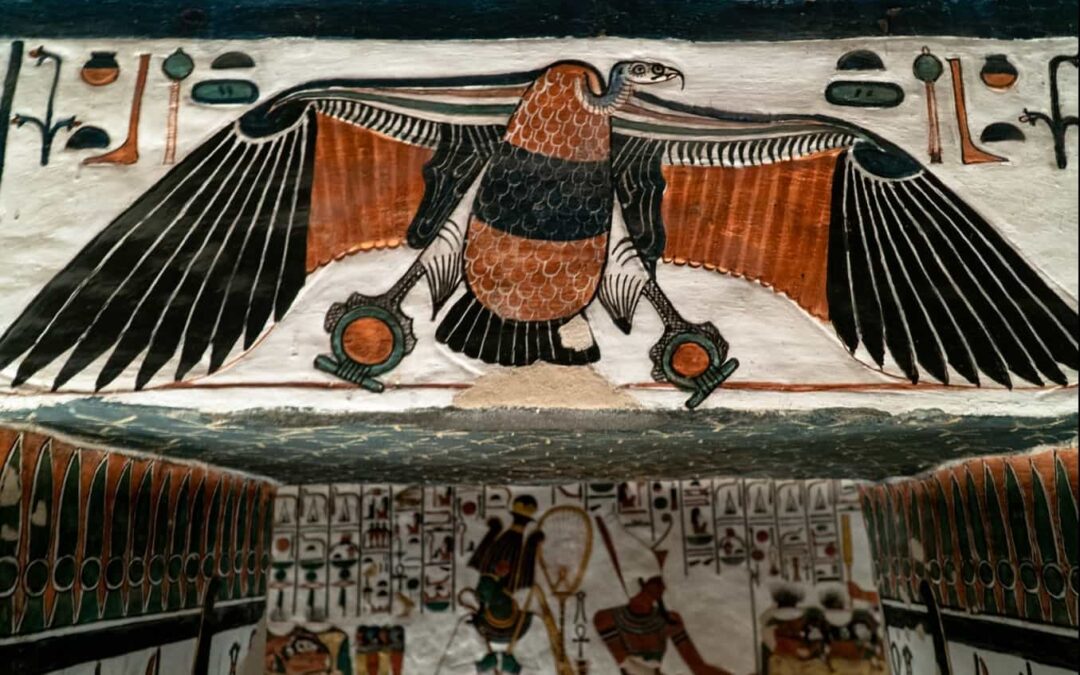Ancient Egyptian deity, Nekhbet, represented as a vulture adorned with the crown of Upper Egypt.
Nekhbet, meaning “That of Nekheb,” is a winged vulture goddess, revered as the protector of Upper Egypt and the pharaoh. She originates from El-Kab (Nekheb), where she was worshipped in the form of Shesmetet during the predynastic era.
Subsequently, she became the patron deity of Nekhen (Hierakonpolis), the capital of Upper Egypt, and evolved into a national goddess upon the unification of this city with the capital.
Functioning as a maternal figure, she specializes in safeguarding childbirth and is present during the births of gods and kings. Nekhbet’s primary role is to aid the king during his birth, coronation, jubilee festivities, and particularly in times of conflict.
She is often depicted alongside Wadjet, the lady of Lower Egypt, collectively referred to as “The Two Ladies,” a title signifying their protection over the Pharaoh.
Additionally, in her role as the protector of the king’s son, she earned the title “The Great White Cow of Nekheb.” Identified as Ra’s daughter and termed “the right eye of Ra,” she was also known as the wife of Hapi, the god of Upper Egypt.
Nekhbet’s representation typically includes a woman adorned with a resting vulture headdress, sporting lowered wings (a headdress later adopted by queens). Alternatively, she is depicted as a white vulture wearing the hedyet, the crown of Upper Egypt.
In her hands, she holds a lotus flower encircled by a cobra and an ankh. Often portrayed extending her wings over the king as a protective gesture, she is sometimes depicted holding arrows, symbolizing her martial prowess. Scenes showcasing her nurturing the royal prince highlight her association with childbirth.
Found on the lintels of doorways within tombs, Nekhbet’s presence serves to specify the ritual orientation of the door. Her distinct color was white, contrasting with Wadjet, who was associated with the color red as the goddess of Lower Egypt.
She was revered as a birth goddess in the popular religion of the New Kingdom and Late Period. Her sanctuary was erected in front of the temple dedicated to Horus at Edfu; forming, along with Horus and Thoth, a somewhat artificial triad.






